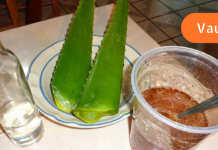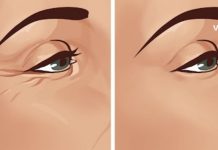If the skin on your nose gets red and irritated during a cold, you’re not alone—and there are simple home remedies that may help. But before diving into solutions, it’s important to understand what a cold actually is and why it causes so much discomfort.
The common cold, also known as rhinitis, is the inflammation of the nasal mucous membrane. It’s one of the most frequent illnesses affecting the upper respiratory tract. While most of us know from experience that a cold usually isn’t dangerous, it can be very unpleasant and disruptive, especially for children.
At first glance, a cold may seem like a minor annoyance. However, if left untreated—or if it affects infants who cannot blow their nose or express their discomfort—it can lead to complications. So what causes a cold? Is medication always necessary? When should you call a doctor? These are questions every parent should be prepared to answer.
The Nose: A Vital Organ
Before we get into symptoms and treatment, let’s take a moment to appreciate the role of the nose in our health.
The nose isn’t just for smelling—it’s a critical line of defense for the entire respiratory system. It filters the air we breathe, removing dust, microbes, and other irritants. It also warms and humidifies the air, protecting our lungs from dryness and cold. Inside the nasal cavity are nerve endings responsible for the sense of smell. That’s why when there’s a problem in the nose, the entire body can suffer. Breathing becomes difficult, sleep is disrupted, and even lying down comfortably becomes a challenge.
Special Considerations for Infants
Colds can be especially troublesome for newborns and infants. Since they can’t blow their nose, congestion interferes with feeding and sleeping. In some cases, colds may lead to breathing difficulties. Moreover, infants are more vulnerable to complications, which makes prevention and early treatment especially important.
Causes of Rhinitis
Rhinitis is generally divided into three main types: infectious, non-infectious, and allergic.
- Infectious rhinitis is most often caused by viruses such as adenovirus, rhinovirus, or coronavirus. Bacterial rhinitis is less common and usually occurs when a viral infection turns into a chronic condition. Fungal and parasitic rhinitis are rare.
- Non-infectious rhinitis can result from structural abnormalities in the nose (such as a deviated septum or nasal polyps), or from overuse of nasal sprays and drops.
- Chronic rhinitis not only affects breathing but also damages the skin around the nose. People with chronic colds often have red, peeling, swollen noses.
Natural Remedies for Irritated Skin
If your nose gets red and irritated in the cold, you can try some natural remedies to soothe the skin:
- Linden Flower Infusion: Clean your nose with a sweet infusion of linden flowers twice a day—morning and evening (but not right before going outside in the cold). This helps reduce inflammation and soften the skin.
- Chamomile Compresses: Two to three times a week, alternate warm and cold chamomile compresses on your nose. To prepare the compress, boil 1–2 tablespoons of dried chamomile flowers in one cup of water for 10 minutes. Let it cool, then strain.
- Aloe Vera Solution: Mix fresh aloe juice with water (1 part aloe, 2 parts water), soak a multi-layered gauze in the mixture, squeeze gently, and place it on the irritated area for 15 minutes. Repeat this treatment every other day for 20–25 sessions. Aloe is known for its healing and anti-inflammatory properties.
- Cabbage Juice Pads: Fresh cabbage juice can also help. Soak a cotton ball or gauze pad in the juice and place it on your nose for 15–20 minutes. Cabbage is rich in antioxidants and can reduce swelling and irritation.
These home remedies can be an effective way to care for your skin during a cold. However, if symptoms persist or worsen—especially in children—consult a healthcare provider. Proper nasal hygiene, rest, and hydration remain the most important elements of recovery.


















